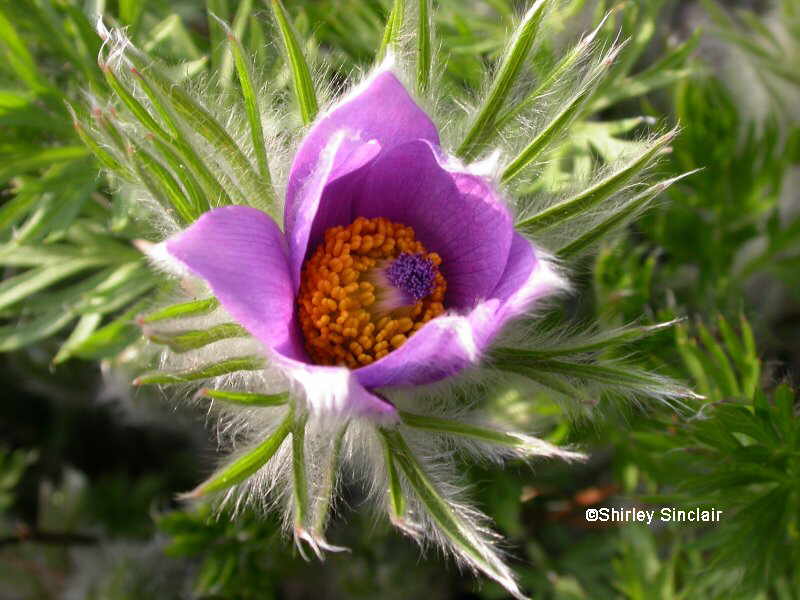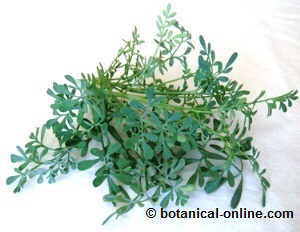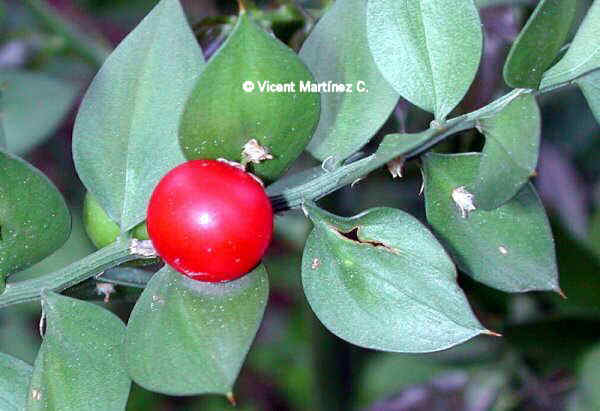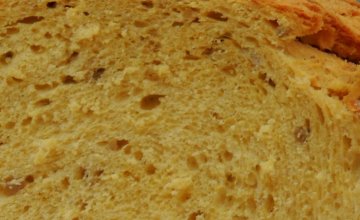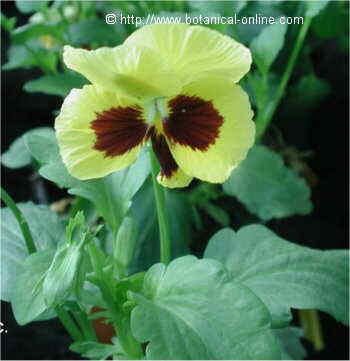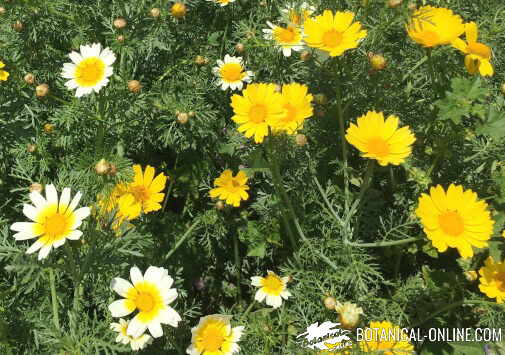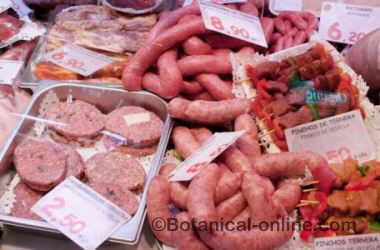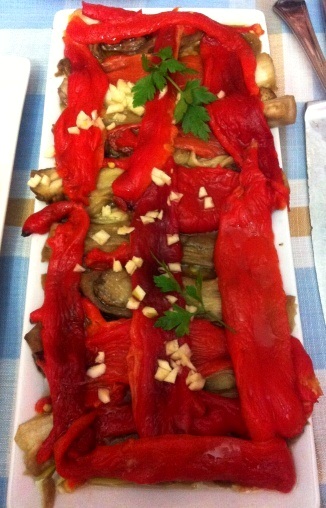Contents
CULTIVATION OF TURNIPS AND RUTABAGAS
 Characteristics of turnip
Characteristics of turnip
Drawing of turnip
Photo of turnips |
– Turnips and rutabagas are biennial growing plants that are grown primarily for its edible root.
– Both are plants in the Brassicaceae family.
– The root is napiform, globose and axonomorphous, highly developed, protruding from the ground.
– Rutabagas are usually harvested in winter, while turnips are grown throughout the year.
– Turnips (Brassica napus var. napus) grow very rapidly, between 6 and 12 weeks after sowing. The root is consumed tender. It is important to maintain separation between rows and plants to fully develop its root. Rinsing is performed as soon as the seeds sprout. It is harvested in summer mainly, but can be planted in summer for harvest in November, at the latest.
– The rutabaga (Brassica napus var. napobrassica) flavor is sweeter than turnips. It is sown in spring and harvesting is done when the root is very tender in late summer. We must avoid creating too adult plant, as its roots are very woody. Sometimes grown to great size, although in these cases goes to feed animals.
– The leaves of these plants are also edible. The young shoots are harvested in March and April.
– Plants flower in spring of the second year of cultivation. The inflorescence is a terminal raceme of yellow flowers characteristic of the Cruciferae. The fruits are siliques, green and with warts.
 Varieties
Varieties
The family of the Cruciferae is surely one of the most present in our diet, represented by broccoli, Brussels sprouts, watercress and mustard. These plants, which are grown for food since time immemorial. They have been developed through selections and crosses between species, a wide range of types and varieties:
– Common turnip (Brassica napus var. napus) is a plant for the production of its roots, which are consumed in food, raw or cooked, in soups, boiled, soups, etc.. * More information: see turnip in food in the listing below.
– Wild turnip (Brassica rapa = Brassica campestris) is a wild species of turnip. Its root is less swollen than cultivated varieties, and it is prized for its vitamin C content, which empowers it as a very good antiscorbutic. The leaves are eaten, raw or cooked, and have a strong taste reminiscent of horseradish. * More information: see turnip in food in the listing below.
– Rapeseed (Brassica napus) is a plant for the production of oil. This oil can be rich in erucic acid, injurious to health, although in cash crops plants low in this type of fat have been selected. To distinguish the rapeseed plants with lesser levels of erucic acid in 1978 was patented the name “canola”. This name comes from the English Canadian oil low acid.
Canola oil is suitable for human consumption, as it has a low content of erucic acid (less 2%) and glucosinolates (less 30 micromoles per gram).
Rapeseed leaves can be eaten in salads. The immature flower bouquets are consumed as broccoli. The sprouts are eaten in salads and sauces to flavor mustard. The root is medicinal, and it used as a diuretic, emollient, expectorant and against rheumatic pains.
– Chinese cabbage, pak-choi or bok-choy (Brassica rapa var. chinensis): variety developed in the East. Highly prized for its leaves, which are harvested tender in summer and autumn. These are present in many traditional recipes, which provide a sweet taste and crunchy texture. They are eaten raw in salads, cooked, dried as a condiment, and even as sprouts. In English it is known as celery cabbage, celery mustard, Chinese cabbage, Chinese mustard, Chinese white cabbage, mustard cabbage and qing cai.
– Chinese cabbage, Chinese cabbage, bai cai or pe-tsai (Brassica rapa var. Pekinensis): another variety widely grown in the East. They consume their leaves, which resemble a cabbage, raw or cooked, in salads, sprouts and stews. Cleansing is considered a vegetable. In English: Chinese cabbage, napa cabbage, Peking cabbage, Shantung cabbage, or da bai cai.
– Komatsuna, Japanese mustard spinach (Brassica rapa var. Perviridis): It is cultivated for its edible leaves, which have a characteristic spicy taste. Variety very resistant to cold and heat, which is harvested throughout the year. In French: “épinard mustard” (mustard, spinach), due to its culinary use like spinach. In English: spinach mustard, Tendergreen, komatsuna and yau-choi.
–Fake Chinese cabbage, pak-choi fake (Brassica rapa var. Parachinensis): the leaves are eaten raw or cooked, as well as the sprouts. Much like Chinese cabbage, though less appreciated, since its leaves are more fibrous and its flavor is more intense. However, the nutritional value is greater than in pak-choi. Very hardy plant. Immature flowers, which are arranged in clusters, are consumed as broccoli. The seeds are rich in oil. In English: false pak-choi, flowering white cabbage, mock pak-choi and cai xin.
Silo for turnips
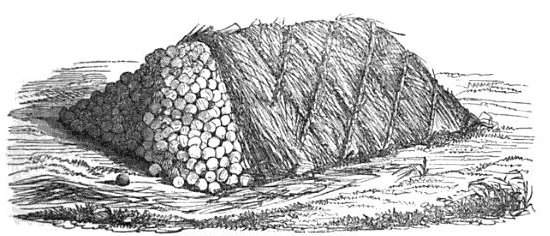
This structure was used to store turnips in the winter and protect them from frost. However, today, they are built with other materials, because the straw is easily damaged by bad weather and rain.
 Climate
Climate
– Turnip is a cool weather plant. It prefers cool, moist conditions to grow.
– It is resistant to frost, and requires temperatures below 10 º C for the seed to germinate.
– It must be cultivated in full sun or in semi-shade.
– Altitudes between 800 – 3,000 m.
– Rainfall ranges from 350 – 4.100mm.
– Annual temperatures between 3.6 and 27.4 ° C.
– It does not tolerate drought.
 Soil
Soil
– Sandy loam soil, light, well-drained and moist.
– Heavy soils prevent the full growth and root development.
– Soil pH between 6 and 7. It can tolerate acidic and alkaline soils, 4.2 to 7.8.
– Soils rich in organic matter benefit growth.
– Sensitive to salinity.
– Dry soils can be responsible for fibrous roots and unpleasant taste.
 Propagation
Propagation
SEED PROPAGATION
– They must be planted in spring, summer or fall. Turnip Planting can be done every three weeks from late February until August. As s final date, sowing must be done in August to collect the roots in November.
– The roots have to be harvested at 8-10 weeks, while still tender, since it is a very fast growing plant.
– In temperate and warm regions, it should not be planted in the warmer months because they usually will produce little.
– Sow them in the nursery or directly in the garden. Cover with a little dirt to bury the seeds 2cm. (between 1 and 3cm.)
– Seeding: 2g. of seeds per 1 square meter of seedbed. Crop: 1.1 to 2.2 kg. / Ha. Transplanting in 4 weeks.
– Separation between seedlings from 5 – 15cm., Between rows, 30 – 90cm.
– Rotate the crop with sorghum, corn, beans, tomatoes, squash, zucchini, garlic, onion, rye or peas.
– Avoid vegetables of the same family, such as cabbage and radishes.
CALENDAR OF TURNIP CULTIVATION

CULTIVATION OF EARLY VARIETIES OF TURNIPS
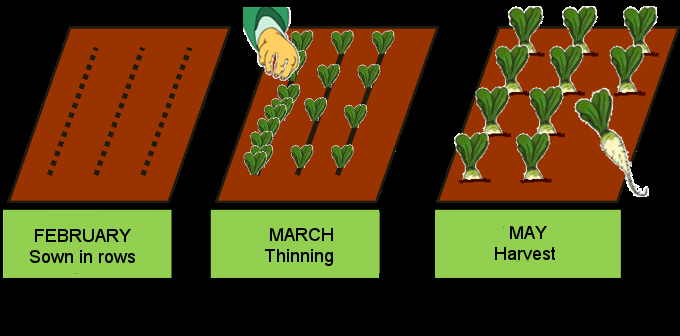
 Maintenance labours
Maintenance labours
– Labor soil deep and add compost at least 3 weeks before planting, ideal in Fall. This crop requires soft and rich nutrients.
– Work surface to condition the soil for planting in rows.
– In mid-July, plant in rows. Lightly coat the seeds with soil.
– When the seeds germinate, you must thin the soil. Plants must be maintained separate 5 – 7.5 cm.
– Preventive control of pests and diseases, especially against weevils and altisa turnip.
– From August to September, make a second thinning before the roots grow too much so that they can restrict growth to each other.
– Control weeds regularly.
– Control of rodents and moles, which can attack the rhizomes.
– In autumn, harvest them when they have reached the desired size and store them in a cool place. protected from frost.
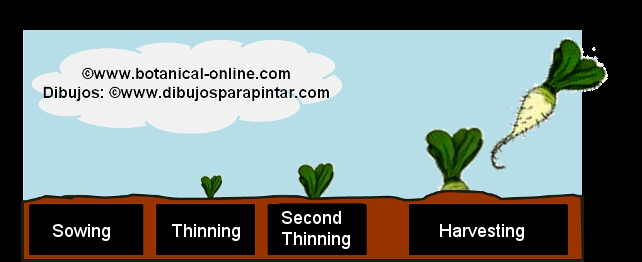
 Harvest
Harvest
– Harvest staggered, when the roots reach the appropriate size of 5cm. in diameter.
– The roots are harvested at 50 to 90 days after sowing.
– Early varieties of leaves are harvested in May, when the shoots are young and tender.
– The harvest can be stored in silos or pits, in well drained soils, with cool ventilated location. The batteries must not be very big to avoid heating in the center.
 Plagues and diseases
Plagues and diseases
Turnips and rutabagas have a pretty short growing season, so they do not usually have large pest problems. They are affected by the same diseases than other cruciferous crops such as cabbage or mustard:
Pests:
- Aphids and viruses
- Cabbage fly (Delia (Hylemnyia) brassicae)
- Gall weevil
- Alticinae (flea beetles)
Diseases:
- Cabbage butterfly
- Clubroot (Plasmodiophora brassicae) is a serious fungal disease common in cruciferous plants, which leads to destruction of the roots of the plant. Is characterized by the presence of yellow bumps on roots and stems. Roots grow excessively and the plant dies.
This Infection is difficult to eradicate, so it is advised to take preventive methods, such as the need to stop growing brassicas for about 6 or 7 years in areas with possible infection, remove the infected material and select resistant seeds. Soil acidification is one of the factors that predispose more to the onset of this disease, so it is necessary to avoid or neutralize acid soils appropriately
![]() More information about turnips.
More information about turnips.

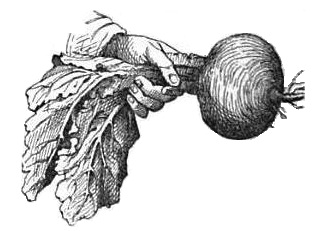
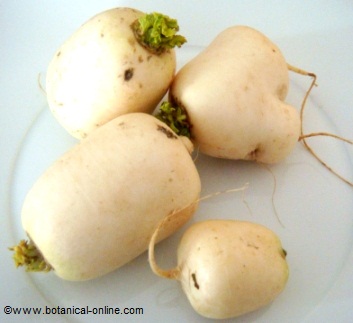
 Varieties
Varieties